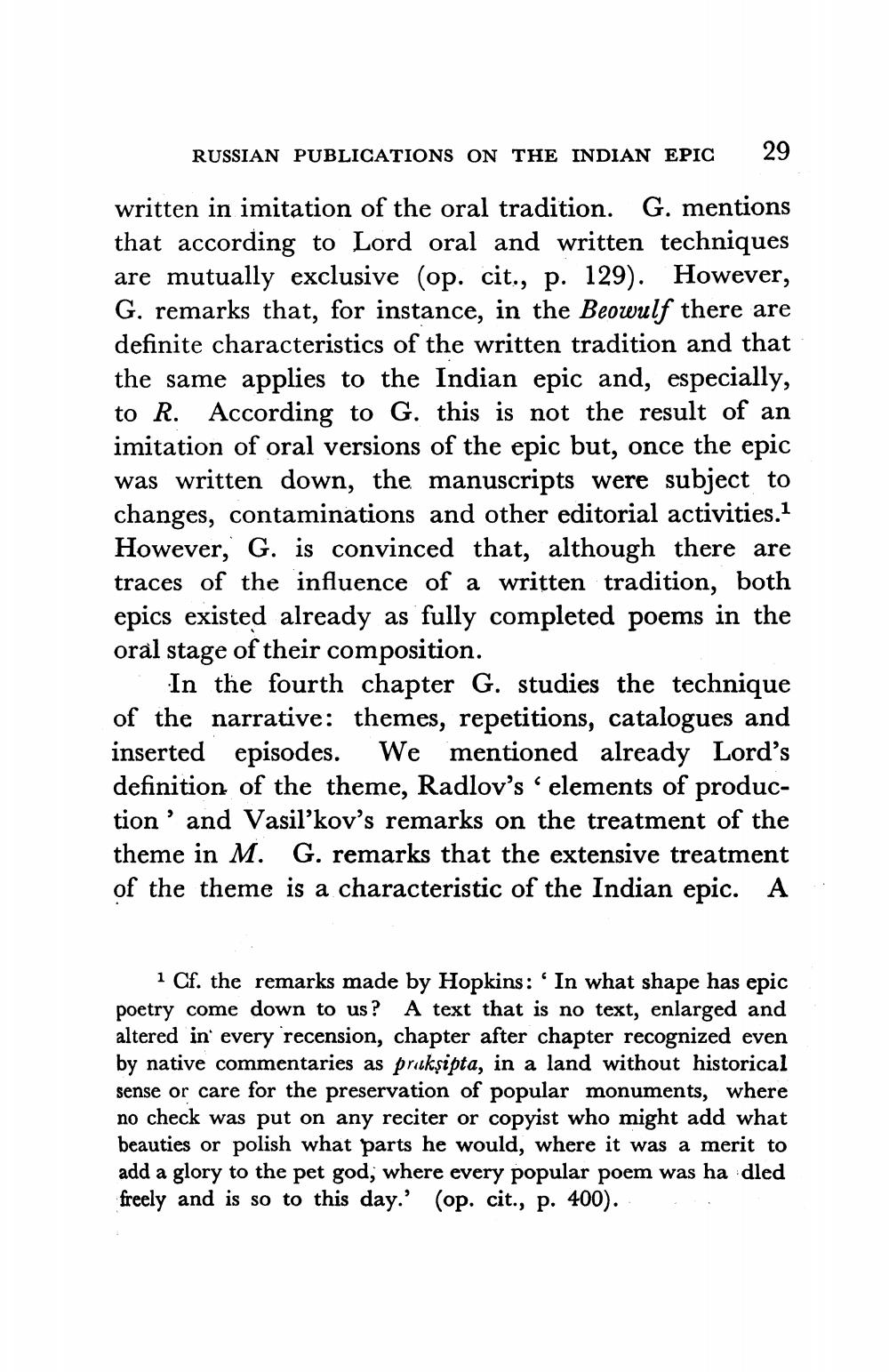________________
RUSSIAN PUBLICATIONS ON THE INDIAN EPIC 29 written in imitation of the oral tradition. G. mentions that according to Lord oral and written techniques are mutually exclusive (op. cit., p. 129). However, G. remarks that, for instance, in the Beowulf there are definite characteristics of the written tradition and that the same applies to the Indian epic and, especially, to R. According to G. this is not the result of an imitation of oral versions of the epic but, once the epic was written down, the manuscripts were subject to changes, contaminations and other editorial activities.1 However, G. is convinced that, although there are traces of the influence of a written tradition, both epics existed already as fully completed poems in the oral stage of their composition.
In the fourth chapter G. studies the technique of the narrative: themes, repetitions, catalogues and inserted episodes. We mentioned already Lord's definition of the theme, Radlov's elements of production' and Vasil'kov's remarks on the treatment of the theme in M. G. remarks that the extensive treatment of the theme is a characteristic of the Indian epic. A
1 Cf. the remarks made by Hopkins: ' In what shape has epic poetry come down to us? A text that is no text, enlarged and altered in every recension, chapter after chapter recognized even by native commentaries as prakṣipta, in a land without historical sense or care for the preservation of popular monuments, where no check was put on any reciter or copyist who might add what beauties or polish what parts he would, where it was a merit to add a glory to the pet god, where every popular poem was ha dled freely and is so to this day.' (op. cit., p. 400).




